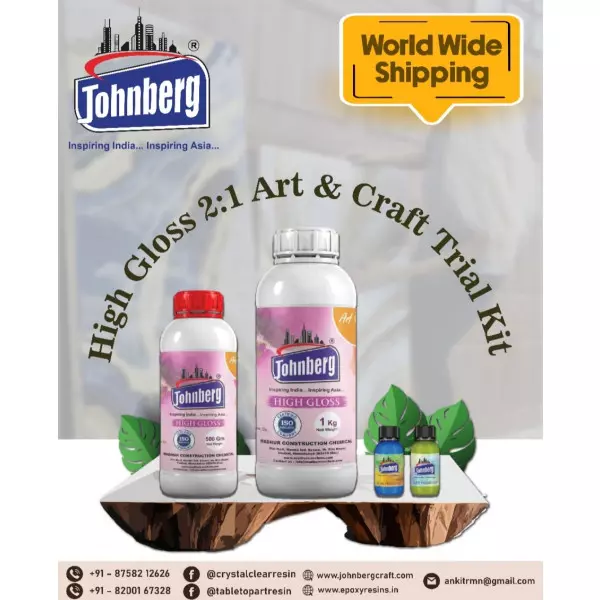Epoxy Art Resin Kit Manufacturers In Jaipur
Details of Epoxy Art Resin Kit
What is Epoxy Art Resin?
Epoxy Art Resin is a two-part clear resin system consisting of a resin and a hardener that, when mixed together, chemically react to form a durable, glossy, and crystal-clear solid. It’s widely used in art and crafts for coating, casting, and creating a high-gloss finish on surfaces like wood, canvas, and more.
Key Characteristics:
Clarity: Crystal clear, often with a glass-like finish.
Glossy finish: High gloss that enhances colors and details underneath.
UV resistance: Many art resins have additives to resist yellowing and UV damage.
Self-leveling: It flows out evenly and smooths itself, reducing the need for manual leveling.
Non-toxic options: Many brands market “food-safe” or “low VOC” resins, making them safer to use indoors.
Durability: Resistant to moisture, scratches, and impact once cured.
Mix ratio: Typically mixed in a 1:1 or 2:1 ratio (resin to hardener), depending on the product.
Curing time: Usually cures to a solid state within 24-72 hours at room temperature.
Uses of Epoxy Art Resin:
Coating: Sealing paintings, wood slabs, or photos to create a protective, glossy surface.
Casting: Creating jewelry, paperweights, or embedding objects like flowers or coins.
River tables: Pouring into wood crevices to create “river” effects.
Mixed media art: Encasing pigments, powders, or other art materials.
DIY projects: Countertops, coasters, and other decorative pieces.
How to Use Epoxy Art Resin:
Prepare your workspace: Use a dust-free, well-ventilated area.
Mix resin and hardener: Measure exactly and mix thoroughly to avoid sticky or uncured spots.
Add color or effects (optional): You can mix in pigments, dyes, or mica powders.
Pour or spread: Pour onto your project or into molds.
Remove bubbles: Use a heat gun or torch gently over the surface to pop air bubbles.
Cure: Let the resin cure undisturbed for the recommended time.
Finish: Sand or polish if needed after full curing.
Advantages:
Clear, glossy, and durable finish.
Versatile for many types of art and craft projects.
Resistant to water and most chemicals.
Can be sanded or polished after curing.
Potential Disadvantages:
Some resins may yellow over time if not UV resistant.
Can be sensitive to mixing errors.
Requires careful handling and PPE (gloves, mask) to avoid irritation.
Relatively expensive compared to some other coatings.

